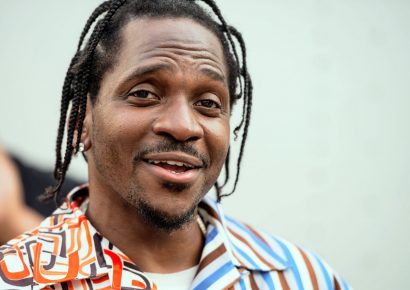Each year Melbourne Fringe plays host to a range of artists, giving them a platform to voice their ideas, concepts and stories.
This year, musical composer Jordan Gilmour has designed an audio-visual installation to magnify voices of Indigenous Australians and asylum seekers in the exhibition For Our Freedom.
Gilmour explains that it’s essentially an “experience exhibiting a collection of stories of identity from Indigenous Australians and asylum seekers”.
When asked why he’s chosen these two groups of people in Australia to tell their stories, he responds saying, “Essentially it’s kind of removing the white man from the equation. Trying to represent the stories of those of the past and stories of those of the present and reflecting on the sort of cultural identity of a contemporary Australia.”
“I feel like if we have the opportunity to respond to that with our artistic integrity, we can essentially enhance these stories from these two culturally different ends of the spectrum without intruding into the actual meaning behind each story.”
The stories in the exhibition are a mix of Australian playwright, scriptwriter, musician, lecturer and Gunditjmara Aboriginal Elder, Richard J. Frankland; poet, writer and Somali asylum seeker, Hani Abdile; activist, podcaster and Sudanese refugee Abdul Aziz Muhamat; and human rights activist and Associate Professor, Munjed Al Muderis.
Gilmour is a long-time friend of Franklin, who’s a lecturer at VCA, and the two have worked on projects previously. For Our Freedom first began when Franklin gave some of his poetry to Gilmour, “I was very touched by it,” Gilmour says. “And kind of started the whole thing.”
Gilmour then went to the exhibition They Cannot Take The Sky at the Immigration Museum and found the works of Abdile. He reached out to her and over coffee, explained his project and in turn she talked about identity and what it means to belong in this country.
“I was kind of moved by that,” Gilmour says. And that got him thinking, “I’m thinking of the perspective from an Indigenous Australian, an Elder, verses a young Somalian refugee, who are both telling a very similar story of a traumatic past and a hope for a better future.”
“These are two very similar stories from two different cultures. And we’re on Aboriginal land and we have the audacity to refuse people seeking asylum to come into the country and it’s like, ‘well does anyone actually think to ask what Indigenous Australians think? They should be in charge of letting people in.”
From there, Gilmour found Abdul Aziz Muhamat and his podcast, The Messenger, which gives insight into the Australian immigration detention centre on Manus Island and his experience of fleeing tragedy and seeking asylum.
“And the final bit to that was finding one more voice,” Gilmour explains. That voice is Associate Professor Munjed Al Muderis, who describes the experience of coming to Australia by boat and the trauma that went with that. “And that was the final piece of information that I needed to stitch the whole thing together,” Gilmour says.
“So, it’s just a compilation of all these different people and their experiences of living in this country and how they got here and what it means to live here.”
The installation features these voices in an immersive experience for the audience; so they can feel the concept, not just listen to it. As Gilmour explains, “I’m essentially using projections and audio visuals and the narrative as my compositional fabric and then you’re manipulating the audience with that and guiding the audience’s attention on a multi-sensory spectrum, as opposed to just listening to music.”
“We’re trying to best represent the authors and the writers and the speakers as best as we can,” Gilmour notes. “If I can walk away with half a dozen people having been touched and wanting to contribute more to the idea of making Australia feel like a comfortable, multicultural country, then my job’s done.”
Catch For Our Freedom at the Brunswick Street Gallery from Thursday September 19 until Sunday September 29 (bar Monday) as part of Melbourne Fringe. More info via the Fringe website.

